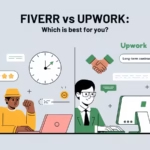Never Split the Difference: Win Every Negotiation
In any negotiation, whether you’re closing a business deal, asking for a raise, or buying a car, the ability to influence and persuade can determine your success. In Never Split the Difference: Negotiating As If Your Life Depended On It, former FBI hostage negotiator Chris Voss reveals powerful techniques that can help anyone become a master negotiator. This guide explores key insights from the book and how you can apply them in real-world situations to win every negotiation.
The New Rules of Negotiation
Why Traditional Techniques Fall Short
Most people consider negotiation as a logical argument, assuming that facts and figures will sway the other party. However, research—and years of high-stakes hostage negotiations—show that emotions drive decision-making more than logic. Instead of relying on rigid negotiation frameworks, Voss emphasizes psychological tactics that tap into human emotions and instincts.
Embracing Emotional Intelligence in Deals
Emotional intelligence is a game-changer in negotiations. Understanding what the other party feels and why they feel it gives you an edge. When you acknowledge emotions and show empathy, you create trust and open the door for better outcomes. Negotiation isn’t about defeating the other person—crafting a win-win scenario that satisfies both sides.
Tactical Empathy: The Heart of Effective Negotiation
Active Listening: More Than Just Hearing
Active listening means truly engaging with the other party. Instead of waiting for your turn to speak, focus on their words, tone, and body language. Repeat key points back to them to confirm understanding and make them feel heard. This builds rapport and makes them more likely to work with you.
Mirroring: Building Instant Rapport
Mirroring is a simple yet powerful technique. By repeating the last few words your counterpart says, you encourage them to elaborate. This makes them feel understood and subconsciously fosters connection and trust.
Labeling Emotions: Defusing Tension
Instead of ignoring emotions, call them out. If someone seems frustrated, acknowledge it: “It sounds like you’re feeling overwhelmed.” This strategy diffuses tension, validates the other person’s perspective, and opens the door for cooperation.
The Power of ‘No’ and the Illusion of Control
Redefining ‘No’: A Pathway to ‘Yes’
Many people fear hearing “no,” but Voss explains that it’s a valuable tool. When someone says “no,” it doesn’t mean the conversation is over—it means they feel in control. Instead of pushing for a “yes,” give them the space to say “no” and then guide the conversation forward.
Calibrated Questions: Steering Without Pushing
Asking questions like “How can we solve this problem together?” makes the other party feel in control while steering the discussion toward your desired outcome. These open-ended questions engage the counterpart in problem-solving mode, making them more likely to cooperate.
Bending Reality: Strategic Techniques for Advantage
Anchoring Emotions: Setting the Right Tone
Setting the emotional tone early in a negotiation is crucial. If you establish a calm, confident presence, the other party will likely mirror your demeanor. This prevents the conversation from becoming adversarial.
The Accusation Audit: Addressing Fears Head-On
Before the other party raises objections, bring them up yourself. Acknowledge any concerns they may have and disarm them: “I know you may think this offer is too aggressive, but here’s why it’s fair.” This strategy builds credibility and makes people more receptive to your proposal.
The Value of Fairness: Creating a Balanced Field
People respond emotionally to fairness. If they feel taken advantage of, they’ll resist. Instead of imposing your terms, frame the deal as fair for both sides: “I want to make sure this works for both of us.” This reduces resistance and fosters collaboration.
Uncovering Black Swans: The Hidden Game-Changers
Identifying Unknown Unknowns
A “Black Swan” is an unexpected piece of information that changes the course of a negotiation. Always dig deeper to uncover hidden motivations or constraints that may influence your counterpart’s decisions.
Adapting to New Information on the Fly
The best negotiators stay flexible. If new information arises, adjust your approach rather than sticking rigidly to a script. Being adaptable allows you to pivot and seize opportunities.
Practical Applications: Bringing It All Together
Real-Life Scenarios: From Hostage to Boardroom
Voss’s negotiation strategies have been used in everything from hostage crises to high-stakes business deals. The principles apply universally—whether you’re negotiating a salary, resolving conflicts, or closing sales deals.
Personal Development: Building Your Negotiation Toolkit
To become a better negotiator, practice these techniques in everyday interactions. Start small—test mirroring, labeling emotions, and calibrated questions in casual conversations before using them in critical negotiations.
Overcoming Common Pitfalls: Lessons Learned
Avoid common mistakes like talking too much, pushing too hard for a “yes,” or ignoring emotional cues. Instead, focus on listening, adapting, and making the other party feel understood and valued.
Final Thoughts
Mastering negotiation is more than just getting what you want—it’s about creating outcomes that work for everyone. Never Split the Difference offers a powerful framework rooted in real-world experience. By applying these strategies, you can negotiate smarter, build stronger relationships, and achieve better results in any situation.

















